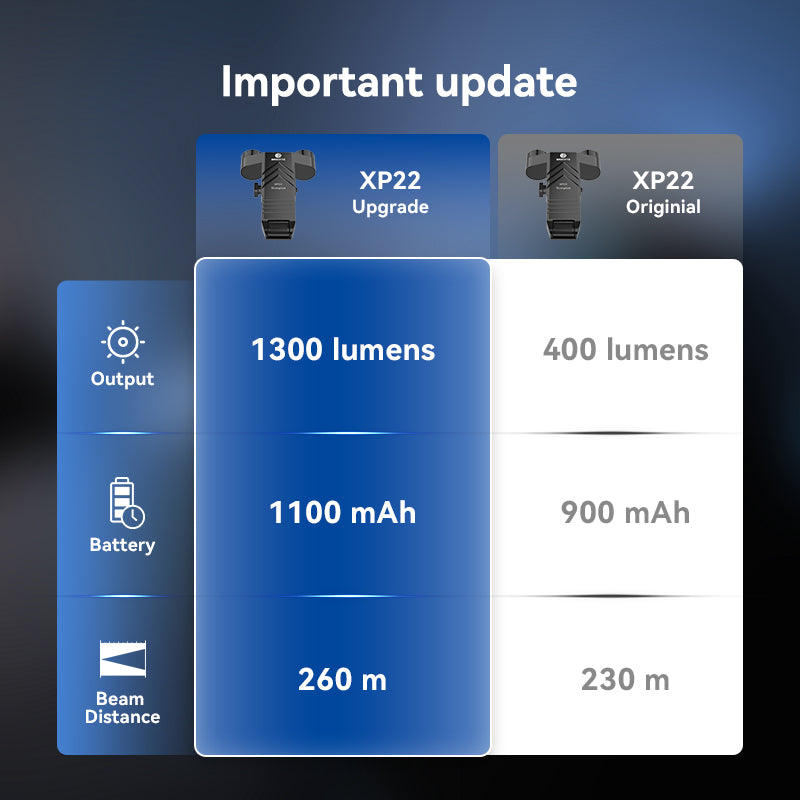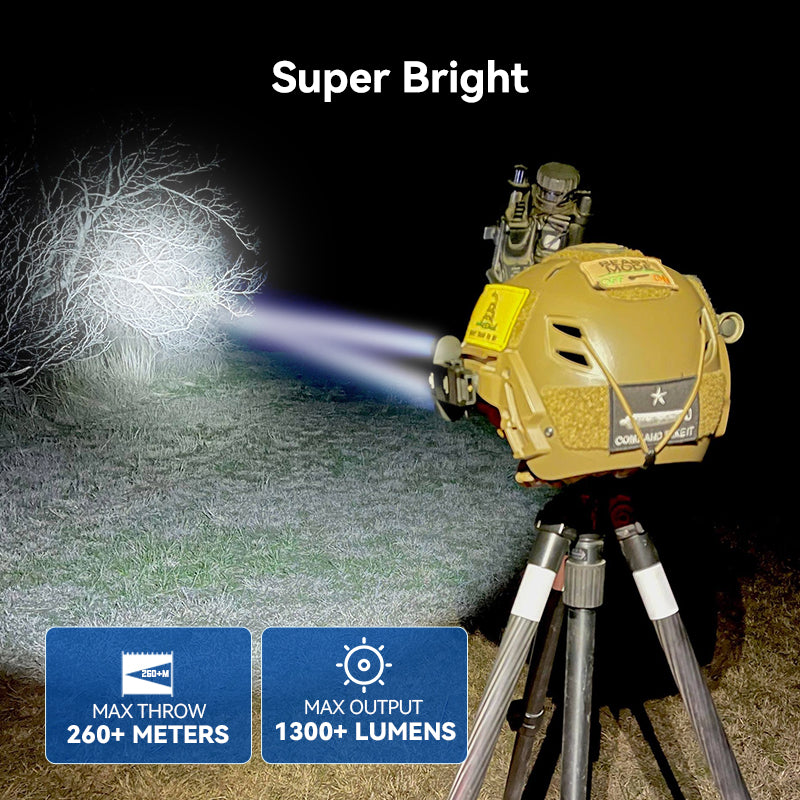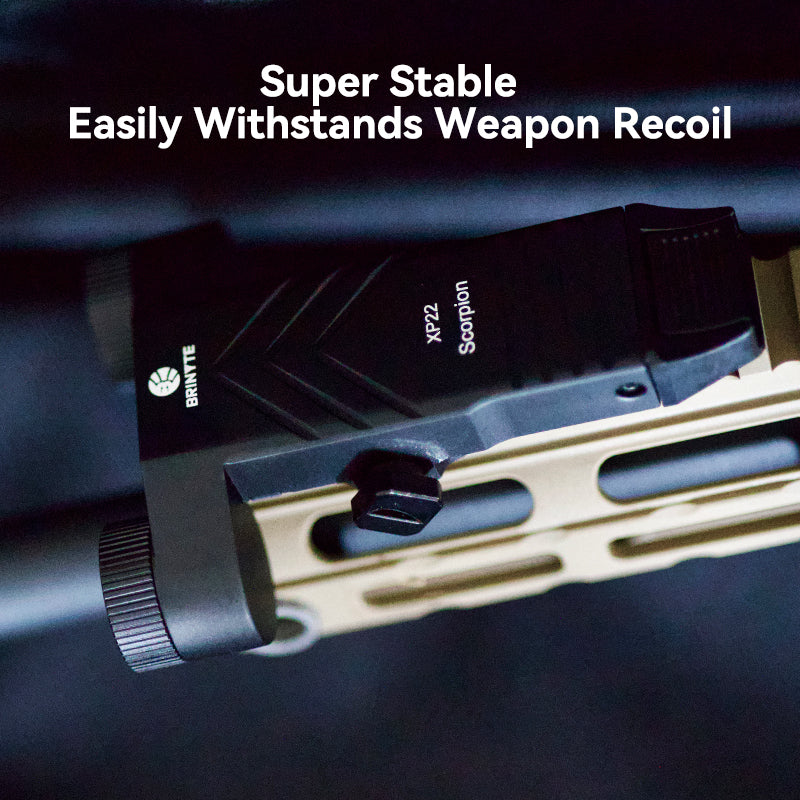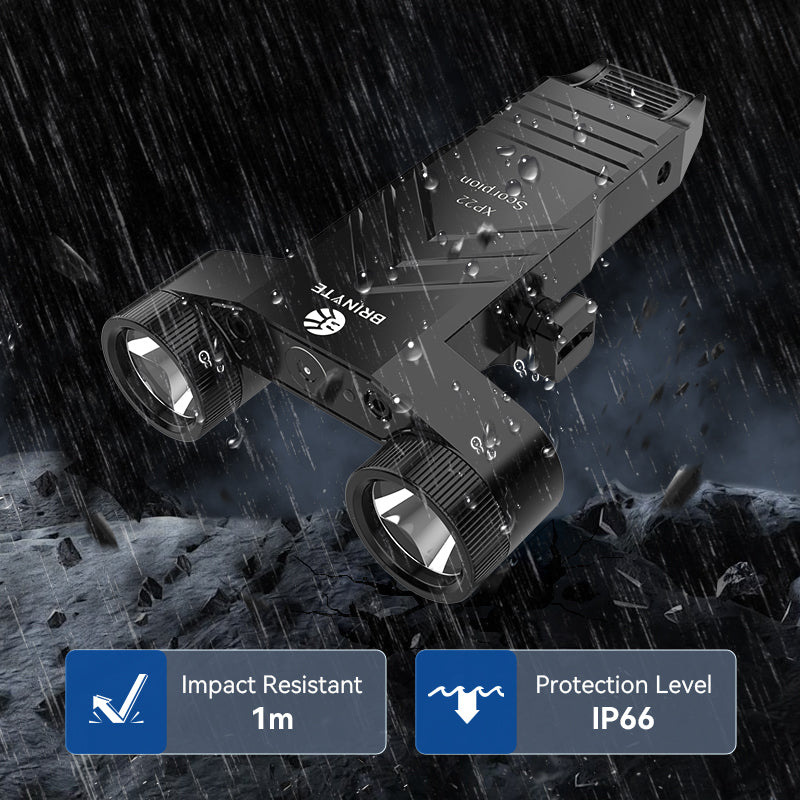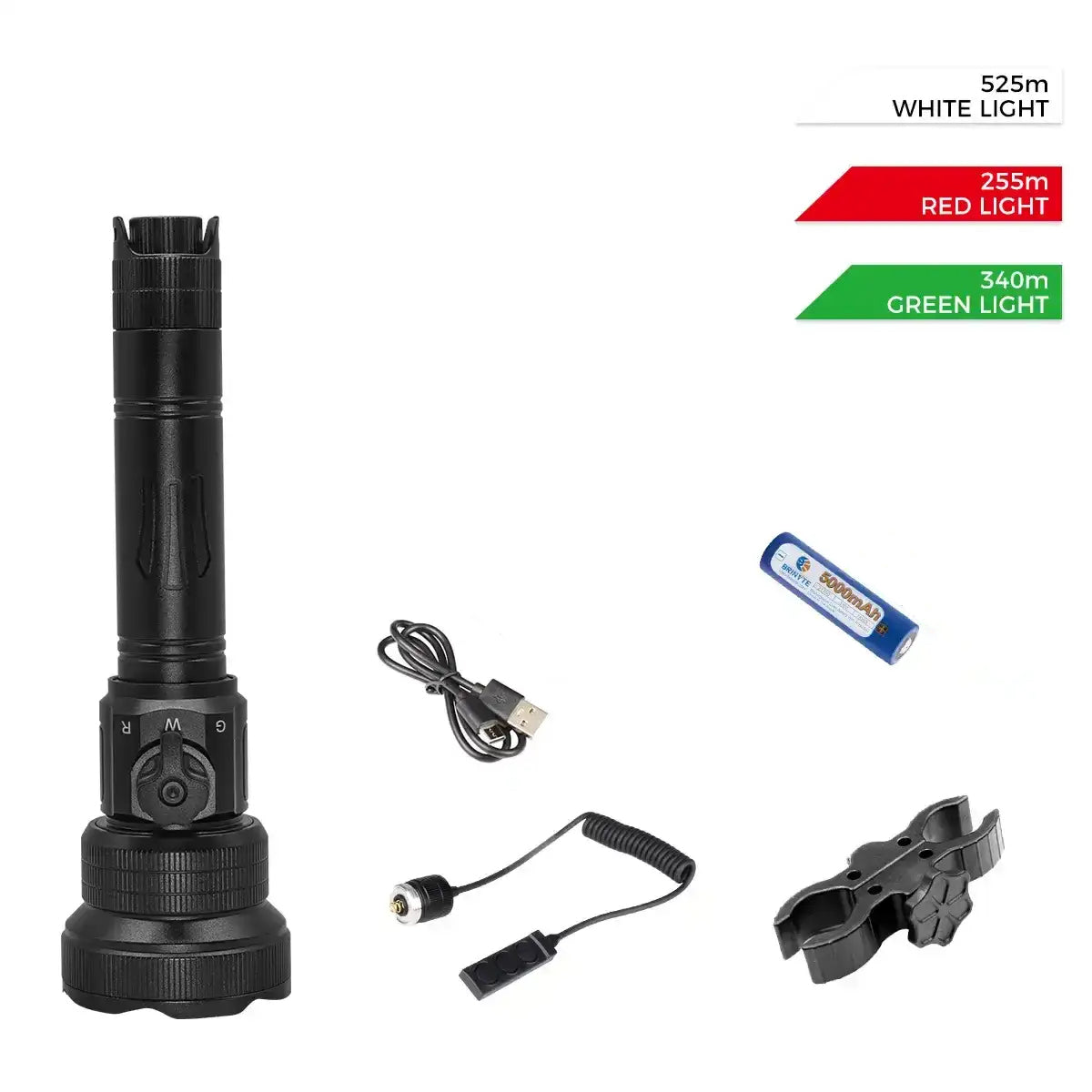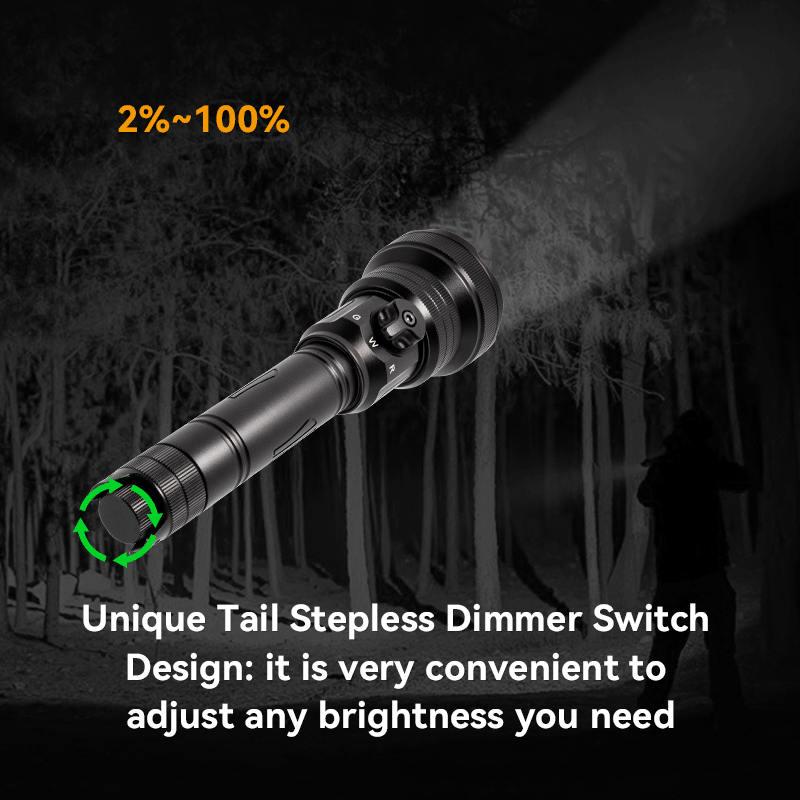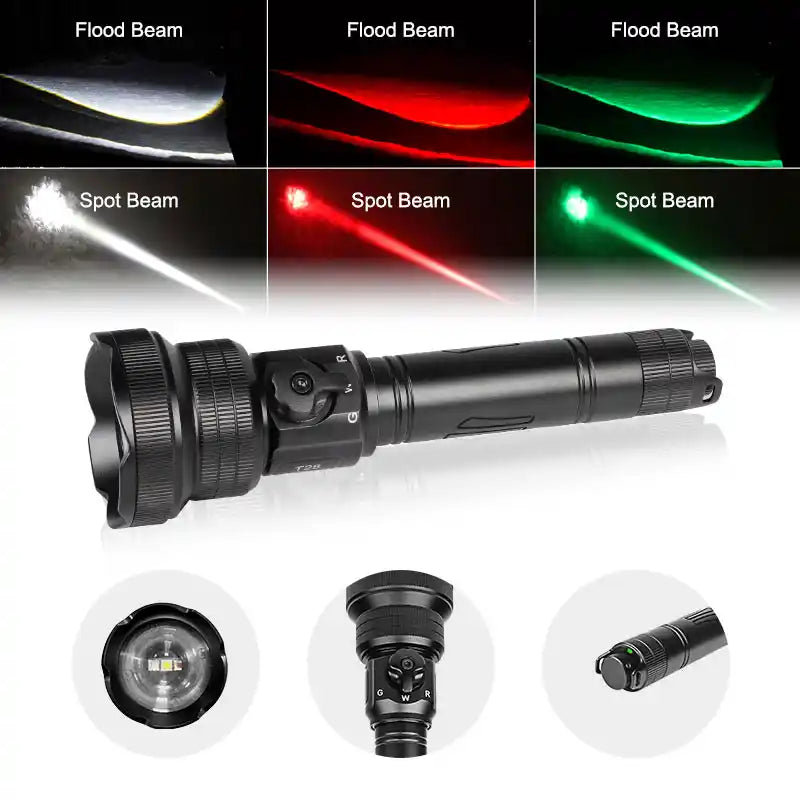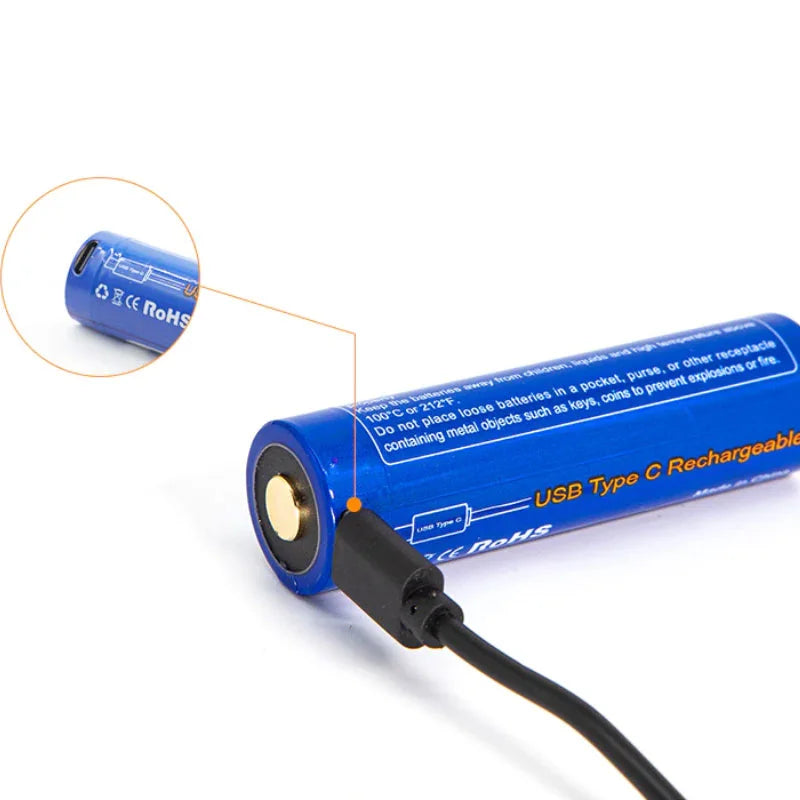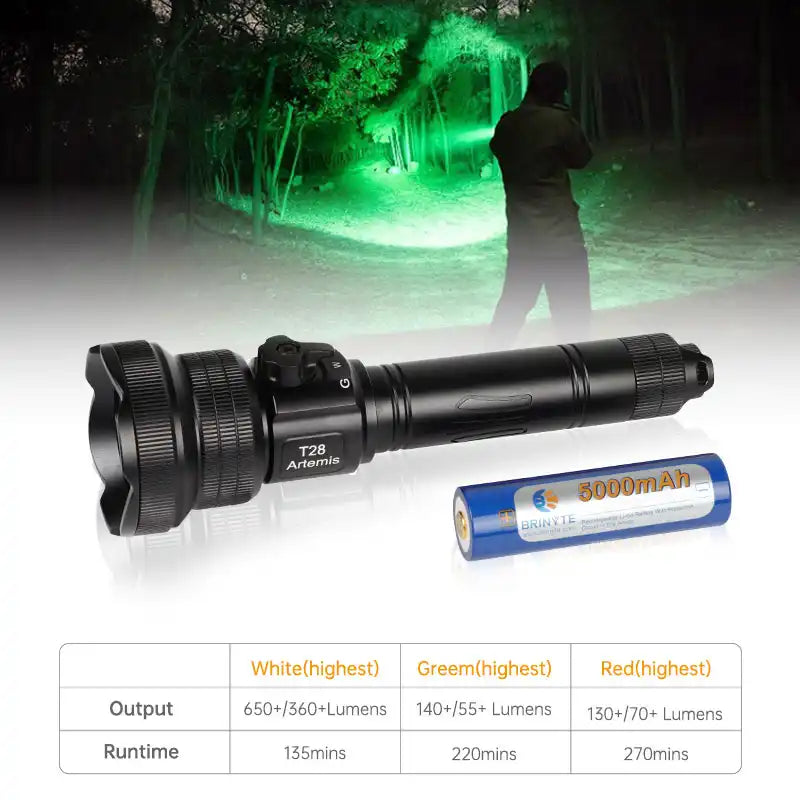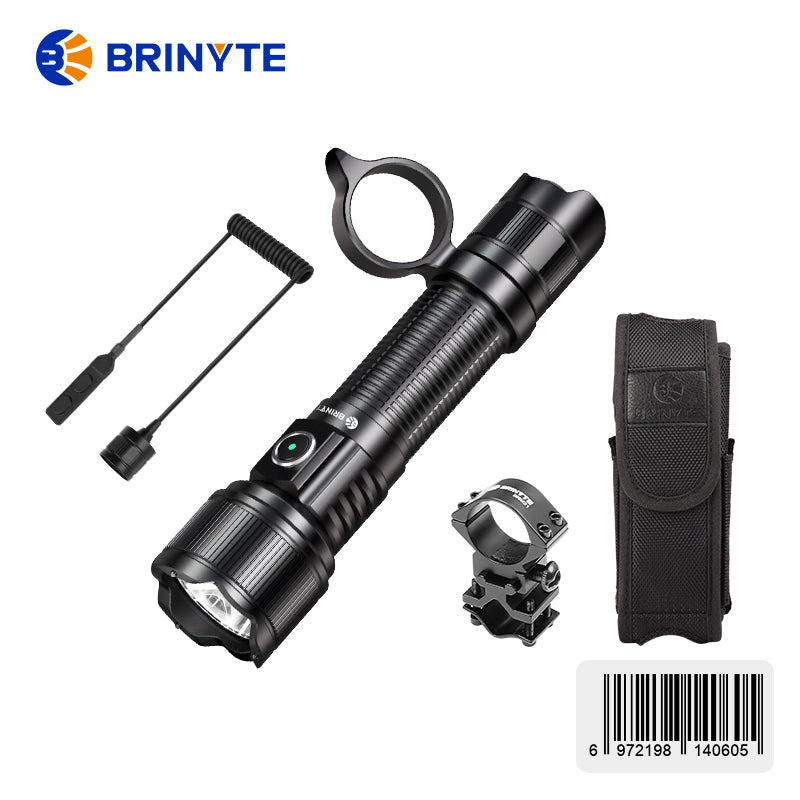Hunting, an ancient human activity, has undergone new evolution and technical support in modern society. Hunting at night is particularly challenging in terms of skills and equipment, and among the many types of equipment, hunting lights are undoubtedly the eyes of night hunters. This article will explore in depth the types of hunting lights, key points for selection, and reasonable use, aiming to provide practical information and suggestions for hunting enthusiasts.
1. The Importance of Hunting Lights
During night hunting, the ambient light is insufficient and the hunter's vision is greatly limited. A suitable hunting lamp can not only help the hunter to clearly observe the prey and the surrounding environment, but also improve the safety of hunting. A good hunting lamp can allow the hunter to move freely in the forest at night as during the day, increasing the success rate of hunting.
Types of Hunting Lights
Hunting lamps can be roughly divided into three types: headlamps, flashlights, and gun lights:
- Headlamp : The biggest advantage of a headlamp is that it frees both hands, making it easier for hunters to operate weapons or other tools. Headlamps are usually lightweight and moderately bright, making them ideal for close-quarter work and on-the-go lighting needs.
- Flashlights : Flashlights are the most common type of hunting lights. They usually have stronger light and longer illumination distance, which is perfect for finding long-distance prey or making long-term observations.
- Gun light : The gun light is a lamp installed on the hunting gun, which can illuminate the target at the same time when aiming, which greatly facilitates night shooting. Gun lights are generally compact in design and light in weight, and will not have much impact on the use of firearms.
3. Key Points for Choosing Hunting Lights
There are several aspects to consider when choosing the right hunting light:
- Brightness and lighting distance : Brightness is the primary factor in choosing hunting lights. Generally speaking, the higher the brightness, the longer the lighting distance, but it will also increase battery consumption accordingly. Hunters need to choose brightness based on the actual hunting environment and needs.
- Battery life : Since hunting usually involves long periods of time in the field, it is important to choose a light with a long battery life. LED lights are widely recommended due to their low energy consumption.
- Durability and waterproofness : The hunting environment is complex and changeable, and the lamp may be exposed to harsh conditions such as rain, mud, etc. Therefore, it is necessary to choose a lamp that is durable and has good waterproof performance.
- Portability and comfort : Considering that the light needs to be worn or carried for a long time when hunting, the weight and design of the light should be ergonomic to increase the comfort of wearing or carrying.

4. Reasonable use of hunting lamps
Proper use of hunting lights can not only improve hunting efficiency, but also ensure hunting safety. Here are some usage suggestions:
- Pre-inspection : Before setting off, you should check whether the power and function of the lamp are normal, and bring spare batteries if necessary.
- Timely adjustment : Timely adjust the brightness and focus of the lamp according to different hunting environments and needs. For example, you may need wider light coverage in a dense forest, while you may need a longer lighting distance in an open area.
- Pay attention to safety : When using hunting lights, avoid shining directly into the eyes of other people or animals to avoid causing injury or unnecessary fright.
- Environmental awareness : When using hunting lights, you should pay attention to protecting the environment and avoiding light pollution from affecting the living habits of wild animals.
5. Conclusion
Hunting lights are important tools for night hunting, and their technological progress also represents the innovation of hunting methods. Reasonable selection and use of hunting lights can not only enhance the hunting experience, but also reduce the impact on the environment while ensuring hunting safety and efficiency. While enjoying the fun of hunting, we should also take on the responsibility of protecting nature and wildlife.



